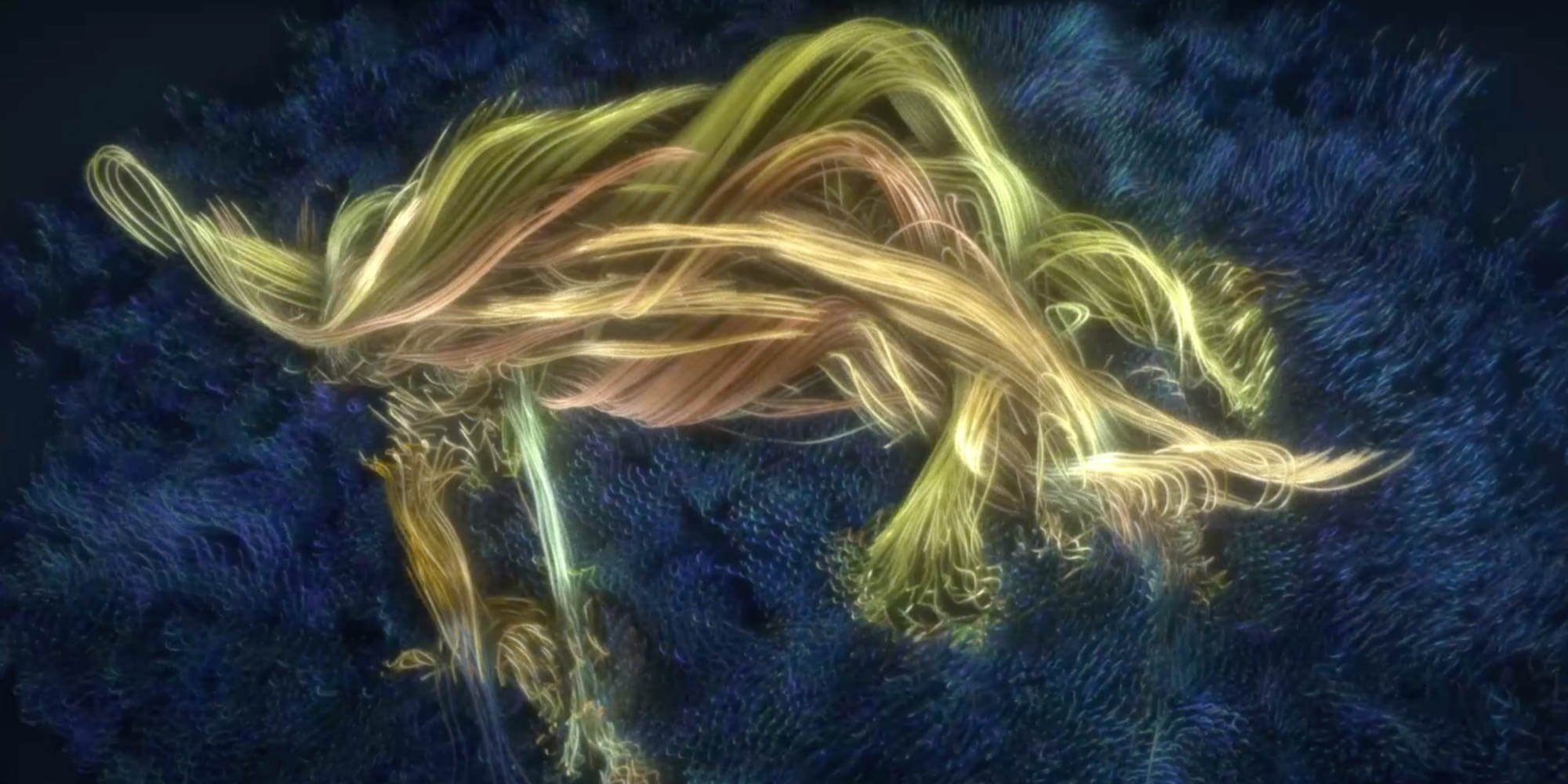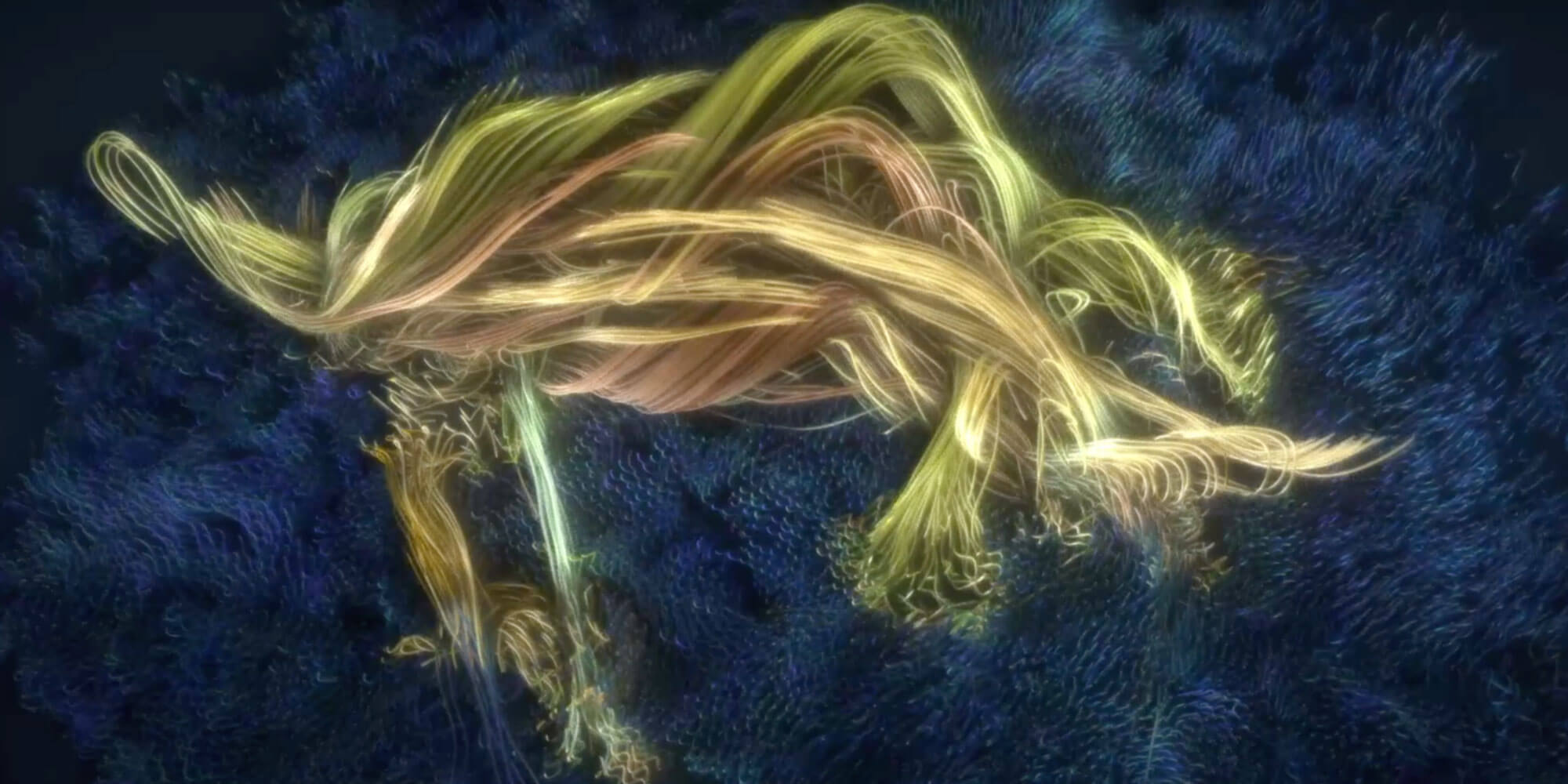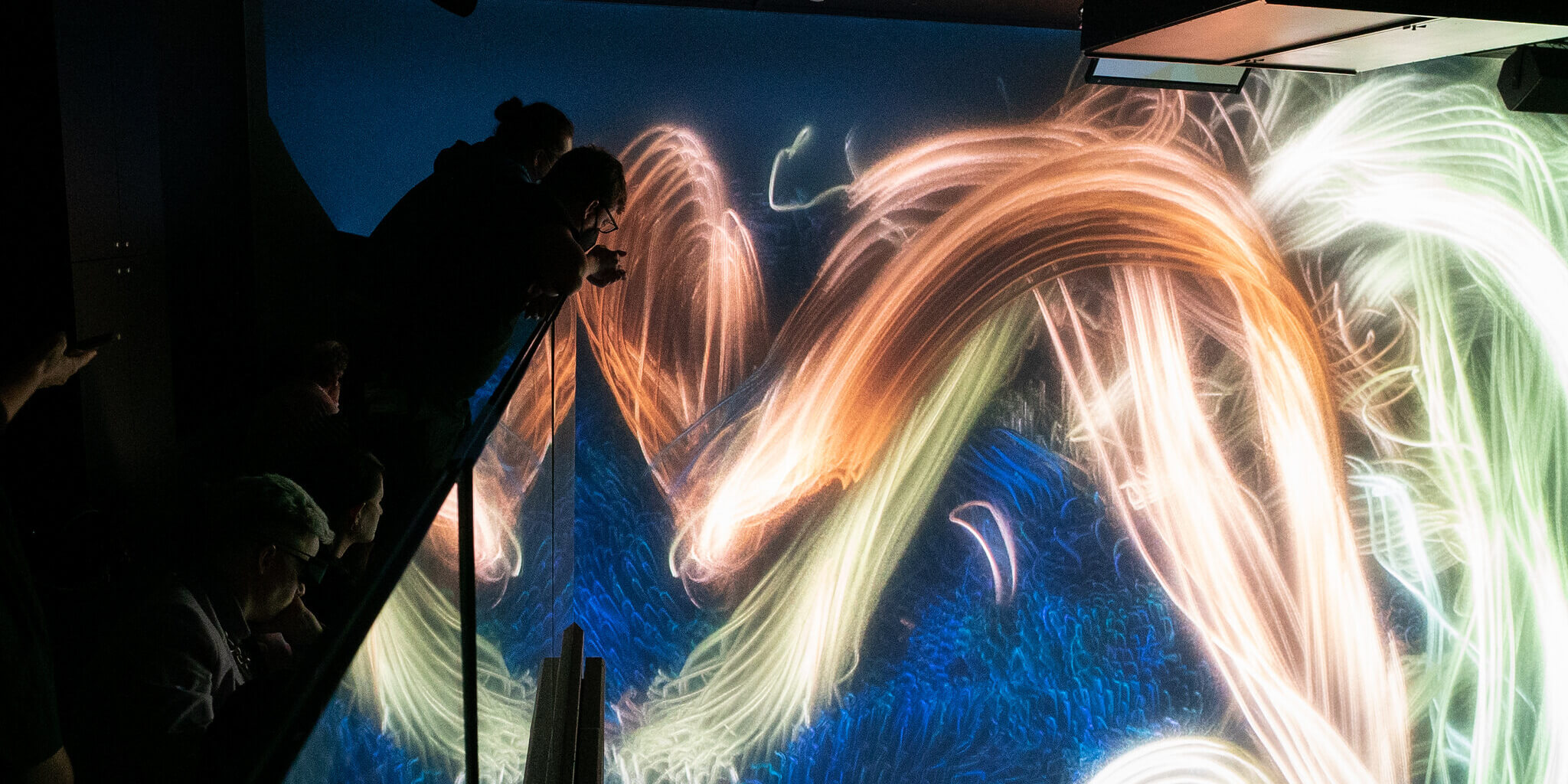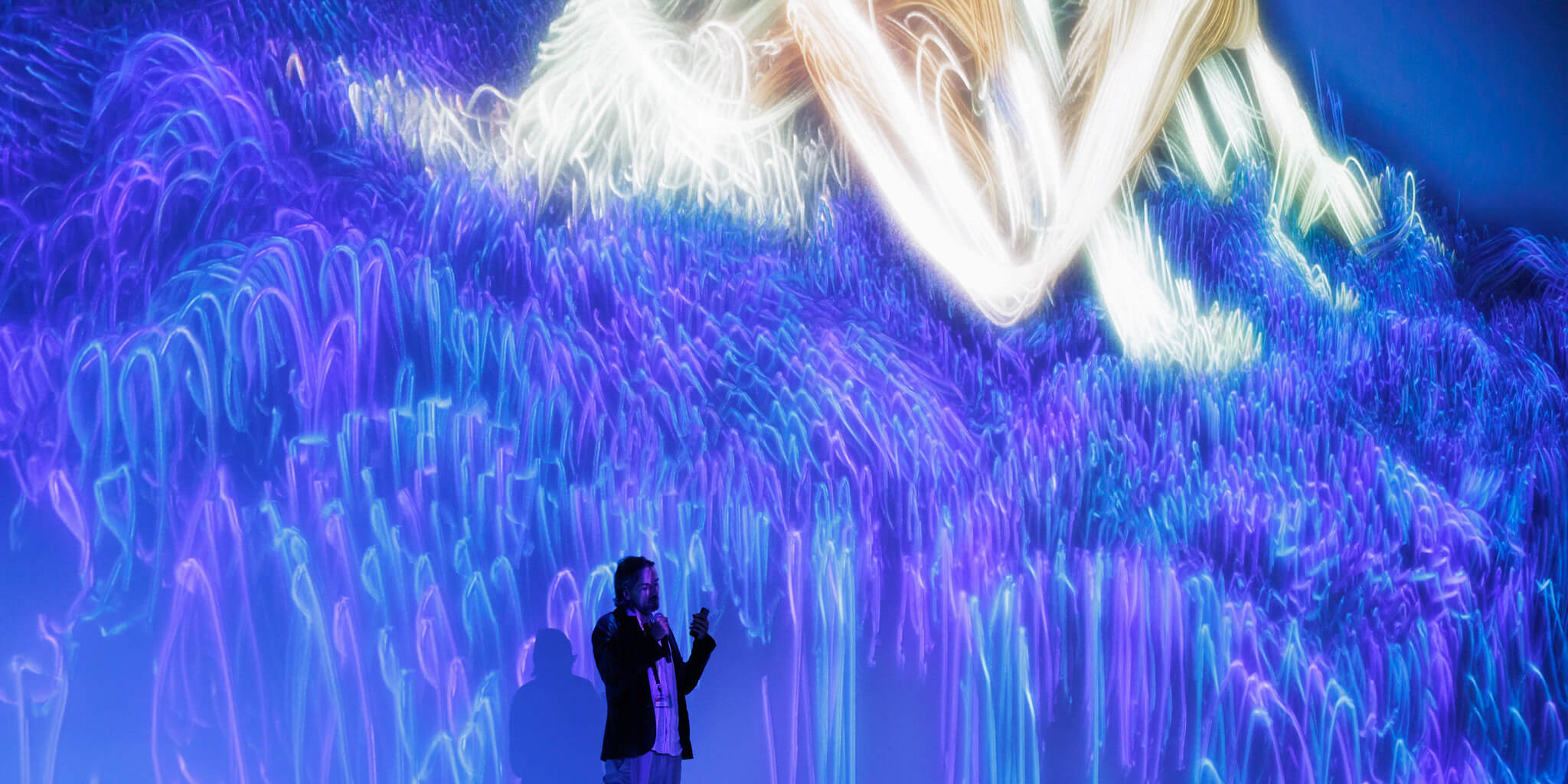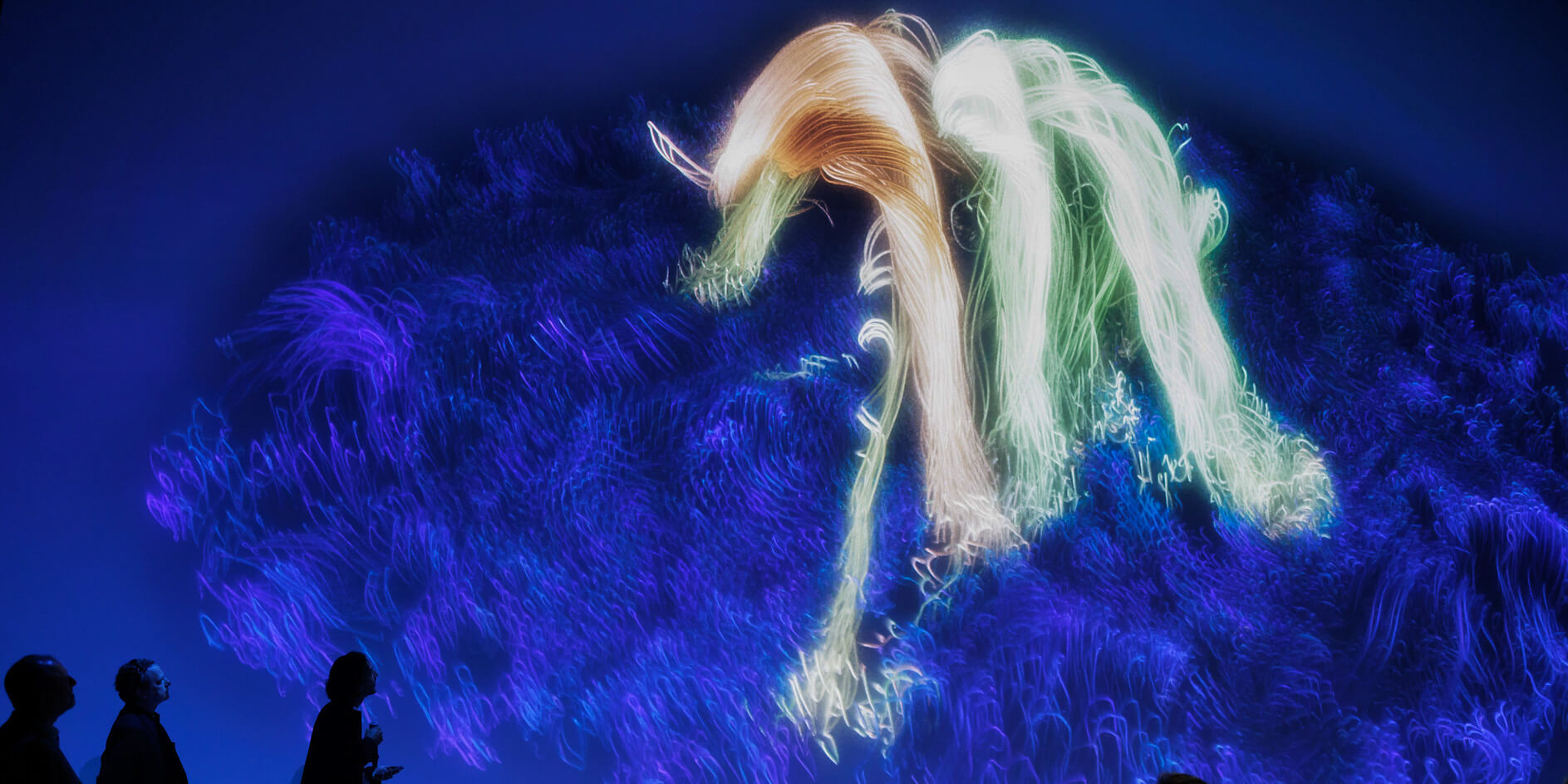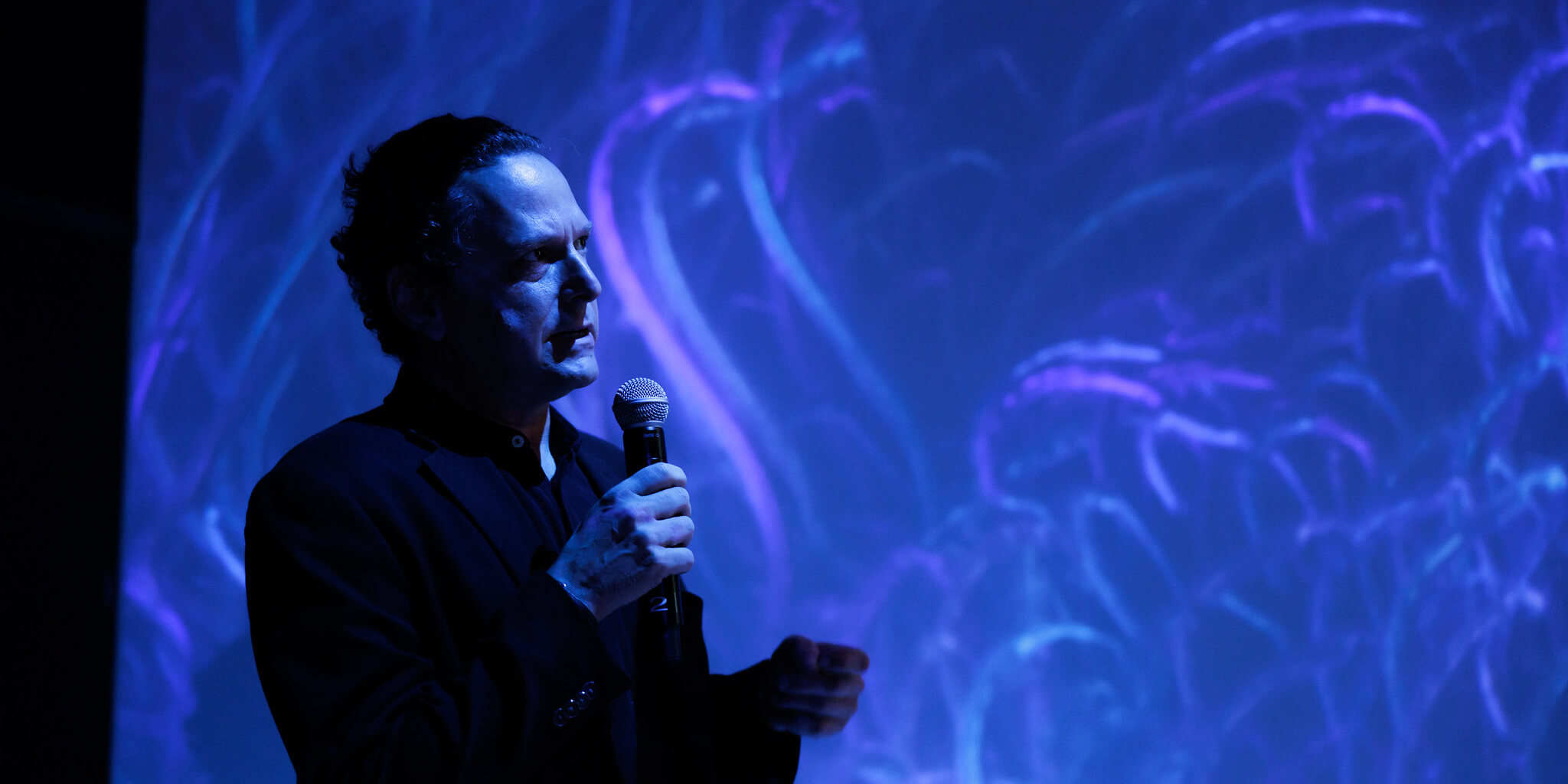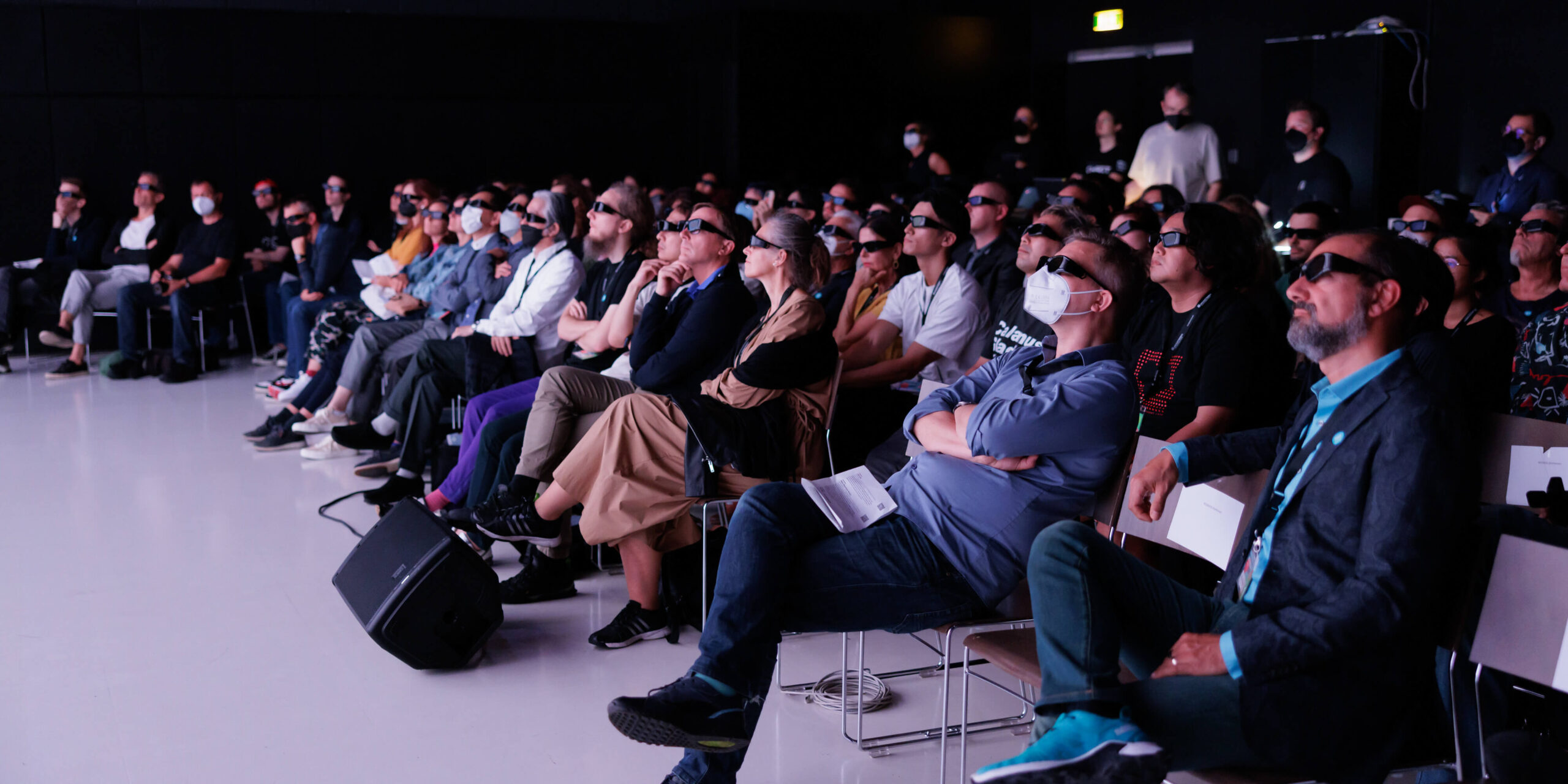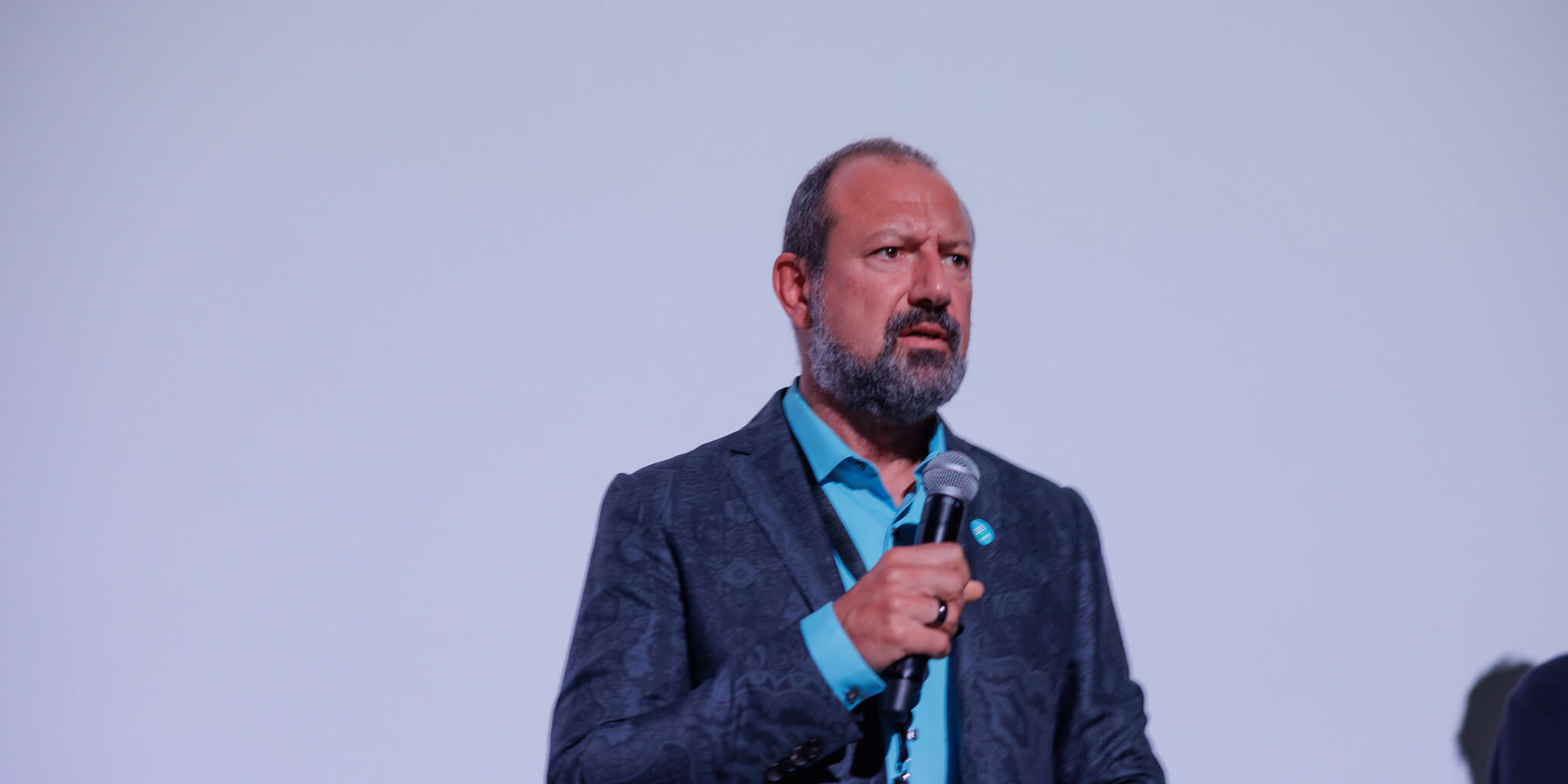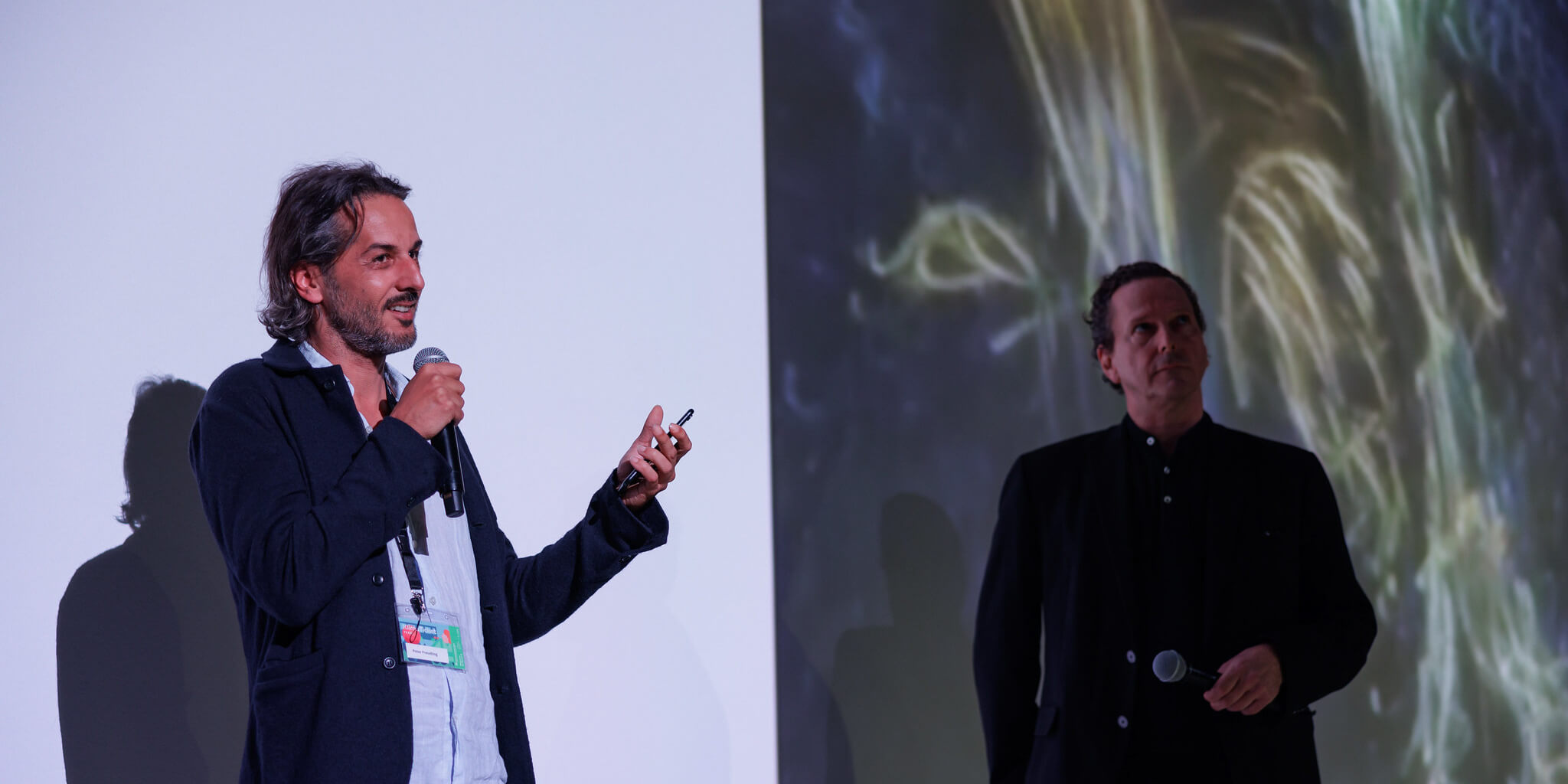A composition of strands, strings, and tones in an imaginary space makes up this vivid real-time painting to artistically interpret anonymized data of today’s hybrid working world.
Developed by the Ars Electronica Futurelab together with Cisco Systems, WebExpression translates the activities on Cisco’s WebEx communication platform into an ever-changing virtual painting. The underlying, highly anonymized static dataset offered serval possibilities to analyze call data over a longer time span. This allowed to enrich the basic call data with properties like intensities and other dynamics – i.e activities between different departments.
The visualization shows that activity in a pseudo-topological mapping which allows for spatial perception of geographic and time-zone distance covered in calls. Color, speed and height of the visual elements reflect other meeting properties. The visualization occasionally switches to a different view, offering a glimpse on to the data over a span of 24 hrs.
The geographic locations (time zones) cause different tones and frequencies (pitches) that harmonize with each other in any combination. As a result, the overall perception of the sound changes over time and also depends on the intensity of active calls in different regions of the world.
It’s not about making that data readable, nor is it about accuracy. The overall goal of the project is to offer a view into the hybrid space created by telecommunication means. Where do we actually meet when we talk across continents? Who’s having dinner and who breakfast after the meeting? The piece is trying to offer a glimpse into an imaginary space which we are all part of and help to populate through our telecommunication technologies.
Credits
Ars Electronica Futurelab
Cisco PX Innovation Team
Rupert Huber
